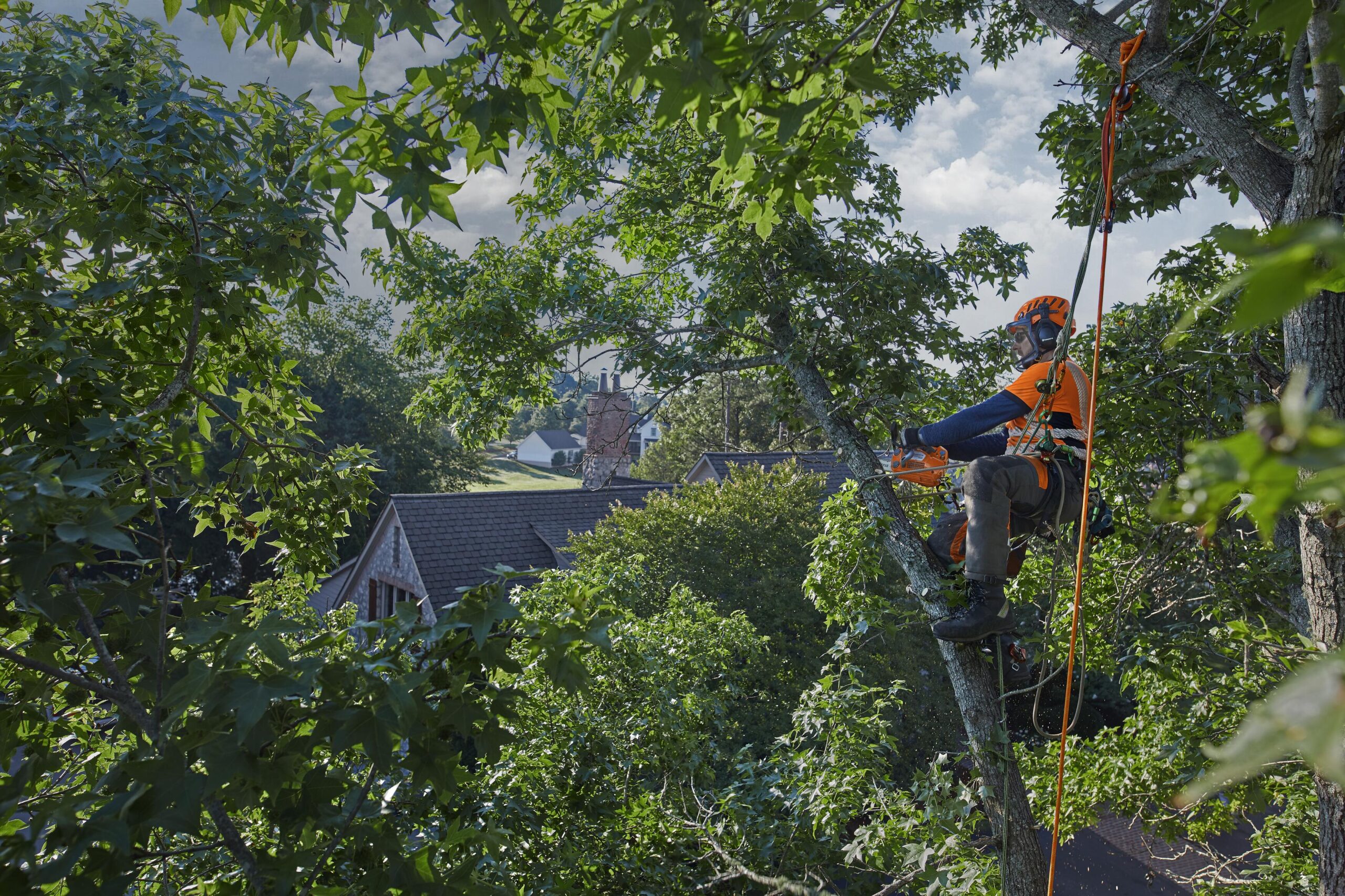Winter and early spring are the perfect time for felling trees because all those bare branches make it easier to see what you’re doing. But whether you are a seasoned professional or a homeowner, tree felling is a dangerous business that requires proper planning and the right working techniques to make sure it is done safely and effectively.
Charles Henderson, Husqvarna’s Tree Professional Business Development Manager, knows a thing or two about this. “Winter is the tree-felling sweet spot. The lack of leaves makes it a breeze for arborists and loggers to assess a tree’s health, spot any potential issues and pick the right ones to cut down,” he says. “Homeowners should also take advantage of this opportune time if they need to cut down any trees in their gardens.”
Remember though that the most important part of tree felling is safety first! Whether you’re a pro or a first-time tree-feller, Henderson recommends following these six steps to complete the task with confidence.
1. Start with a Plan
Before commencing any tree-felling project, it’s crucial to plan. Take a close look at the tree’s surroundings and identify any potential obstacles that may interfere with the felling process. Consider factors such as the tree’s size, shape and proximity to structures or power lines. This assessment will guide you in selecting the right tools and safety equipment needed for the job. For bigger trees, a chainsaw will always be the most efficient and effective tool and it makes post-felling work a lot easier too.
2. Identify the Felling Direction
Carefully study the tree and assess the direction in which it naturally leans. Additionally, take note of the wind direction, as this should align with the tree’s natural lean to ensure a controlled fall. Clear the area around the tree and in the direction of the intended fall to create a safe working zone.
3. Trim the Trunk
Before making the felling cut, it’s essential to prune the tree’s trunk by removing any branches and twigs up to shoulder height. This will ensure that you have a clean and unobstructed cutting path to enhance the safety and precision of the tree’s fall.
4. Determine the Cutting Technique
If you are using a chainsaw, the appropriate cutting technique depends on various factors, including the tree’s size, slope and the size of your chainsaw bar. There are different cutting methods such as the notch and back cut technique or the plunge cut technique, each suited for specific scenarios. If you’re unsure about the best approach, don’t chance it. Get advice from a professional.
5. Inspect for Rot or Disease
Inspect the tree’s timber and lower part of the trunk for any signs of rot or disease. A weakened or decaying tree can behave unpredictably during felling, posing significant risks. If you detect any structural issues, reconsider felling the tree and consult an arborist for expert advice.
6. Establish an Escape Route
Before starting the final cut, make sure you have a clear and safe path of retreat. This path should be at a 45-degree angle away from the direction of the tree’s fall. Having a designated escape route is crucial for maintaining your safety during the felling process.
Henderson reiterates prioritising safety above everything else, adding, “Even with careful planning and preparation, tree removal can be hazardous. If you feel uncertain or uncomfortable with the process, hire a professional with the necessary expertise and equipment.”
He also emphasizes the need to plant one or two new trees for every tree felled. “This practice is essential for maintaining a balanced and thriving ecosystem. By planting new trees, we can offset the environmental impact of tree removal and ensure a sustainable future, keeping the cycle of tree planting and cutting in harmony.”
For more information or to view Husqvarna’s range of products, visit https://www.husqvarna.com/za/
Source: Husqvarna South Africa









